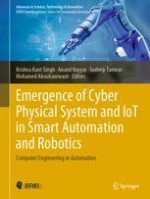Cyber-Physical Systems (CPS) integrate computing and communication capabilities by monitoring and controlling the physical systems via embedded hardware and computers. This book brings together new and futuristic findings on IoT, Cyber Physical Systems and Robotics leading towards Automation and solving issues of various critical applications in Real-time.
The book initially overviews the concepts of IoT, IIoT and Cyber Physical Systems followed by various critical applications and discusses the latest designs and developments that provide common solutions for the convergence of technologies. In addition, the book specifies methodologies, algorithms and other relevant architectures in various fields that include Automation, Robotics, Smart Agriculture and Industry 4.0.
The book is intended for practitioners, enterprise representatives, scientists, students and Ph.D Scholars in hopes of steering research further towards cyber physical systems design and development and implementation across various domains. Additionally, this book can be used as a secondary reference, or rather one-stop guide, by professionals for real-life implementation of cyber physical systems.
The book highlights:
• A Critical Coverage of various domains: IoT, Cyber Physical Systems, Industry 4.0, Smart Automation and related critical applications.
• Advanced elaborations for target audiences to understand the conceptual methodology and future directions of cyber physical systems and IoT.
• An approach towards Research Orientations to enable researchers to point out areas and scope for implementation of Cyber Physical Systems in several domains for better productivity.
